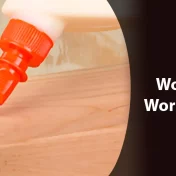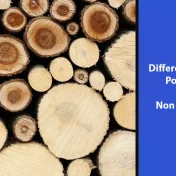Can You Really Glue Painted Wood? The Surprising Answer Woodworkers Need to Know
For many woodworkers and DIY enthusiasts, gluing together painted wood surfaces can seem like an impossible task.

After all, we’ve all heard that wood glue needs to bond directly with the wood’s porous fibers to create a strong joint. But with a layer of paint blocking access to the wood, how could any adhesive possibly work?
The good news is that with the right product and technique, it is indeed possible to glue painted wood using several common adhesives.
However, achieving a durable bond takes more than just slapping glue on top of paint. There are important factors to consider regarding paint type, surface preparation, and glue formulation.
As a professional furniture maker with over 15 years of experience, I’ve tackled my fair share of glue-ups involving painted wood.
Through hands-on experimentation and careful testing, I’ve gained valuable insight into what works – and what doesn’t.
I’ll share everything I’ve learned about gluing techniques suitable for various painted wood situations. We’ll explore the molecular interactions between paint, wood and different adhesive classes like wood glue, epoxy and construction adhesive.
I’ll also provide step-by-step instructions for best practices, along with answers to common questions from homeowners and DIYers.
By understanding the fundamentals outlined here, you’ll be prepared to take on projects with confidence, whether repairing a painted cabinet or building a piece of painted furniture from scratch.
No longer will painted surfaces seem like a roadblock to your woodworking goals. You’ll have the knowledge required to glue up painted wood like a pro.
Wood Glue On Painted Surfaces
When it comes to gluing painted wood, many assume wood glue is unlikely to cut it due to its reliance on bonding directly with the wood.
But is applying wood glue over paint really such a lost cause? Let’s take a deeper look at the science behind the bonding mechanics.
All wood glues, from polyvinyl acetate (PVA) to aliphatic resin formulations, work through the same basic principle – they soak into the porous wood fibers on a molecular level to create an adhesive joint.
The particulate glue polymers wick between the cellulose strands like veins through a leaf.
However, paint (especially oil-based varieties) forms a dense, non-porous layer which prevents glue particles from penetrating below the surface.
Instead of networking within the wooden dendritic structure, the polymers cling to the outer paint coating. This reduces adhesive surface area and contact points versus bare wood.
While binding, wood glue relies on mechanical interlocking as well as chemical bonding. Without access to the complex wooden matrix, it can only form weaker surface bonds to paint.
Over stresses or moisture exposure, these upper-level interactions are more prone to failure.
So in summary – wood glue strictly adhered topically to paint lacks the durability of a deep-seated sub-coating bond achieved on bare wood. But does this mean painted wood is impossible to glue up with these adhesives? Not necessarily.
By selecting the right application strategies and accounting for paint properties, wood glue can still perform surprisingly well for painted substrates.
The key is optimizing conditions to compensate for its blocked absorption. In upcoming sections, we’ll explore proven techniques to get decent results.
By demystifying the glue-wood-paint relationships at a molecular level, we gain a better understanding of variables affecting bond integrity. This insight allows formulating strategies to work within limitations for painted gluing success.
Best Glue Options For Painted Wood
With an array of adhesives on the market, selecting the most appropriate glue can seem daunting when working with painted substrates.
Not all formulations are created equal in their ability to penetrate paint and bind securely. Let’s examine the most suitable options:
PVA Glue
Also called white glue, PVA is an affordable universal option. Its water-based polymers make for easy application and clean-up. While best for porous paints like acrylic, preparation is key for oil-based coatings.
Epoxy
High-strength 5-minute, 30-minute and 12-hour epoxies form tenacious adhered chemical bonds ideal for high-stress situations. They work well across various paint types when mixed and applied properly.
Polyurethane Glue
Flexible PU adhesives like Gorilla Glue withstand moisture and temperature fluctuations. Their creamy thicker formulas adhere solidly without sinkage on most surfaces including gloss enamels.
Construction Adhesive
Formulating as caulk-like pastes, these polymers stick paint formidably for applications lacking clamping. They accommodate uneven gaps better than squeeze out-prone options.
Cyanoacrylate
Also called super glue, this fast-acting glue locks on contact within seconds. It works great for small acute repairs but brittleness limits structural use.
Each product offers specific benefits influenced by the project needs. Carefully consider variables like painted surface preparation required, curing speed, intended stresses, and environmental exposures to pick the best compatible system.
Proper selection paves the way for painted gluing success.
Read Also: Can You Put Polyurethane Over Polycrylic?
Application Tips for Foolproof Bonding
Now that you’ve selected the appropriate adhesive, following best practices during application will help ensure a durable painted glue-up. Let’s examine each step in detail:
Inspect the Paint
Take time to closely analyze condition. Peeling, flaking or bubbling indicates compromised integrity. These unstable areas must be removed by scraping or sanding for a dependable bond.
Surface Preparation
For obtaining optimal adhesion, always degrease with acetone or denatured alcohol before scuff sanding the paint with 150 grit or less. This creates microscopic ravines for the adhesive to interdigitate.
Apply in Thin, Even Coat
Use a small wooden paintbrush to evenly distribute glue along the bonding surfaces. Too much causes squeeze out, too little incomplete coverage. Aim for a thickness slightly viscous than milk.
Allow Proper Contact
Carefully but swiftly bring pieces together, applying gentle downward pressure until fully mated. Small wooden dowels or cauls help distribute force across large surfaces.
Implement Adequate Clamping
Whether traditional bar clamps or elastic strap clamps, apply uniform compression across the bondline sufficient to keep the assembly motionless until set.
Allow Full Cure
Refer to product instructions for exact times according to temperatures and conditions. Most glues require at least 24 hours to develop full integrity. Resist temptation to proceed with next steps prematurely.
By rigorously following application best practices tailored for the adhesive used, you optimize extrinsic factors within your control to ensure a painted glue-up’s lasting structural integrity and aesthetic completeness. Proper prep work pays off exponentially in the long run.
Common Questions Answered for Popular Painted Woodwork Queries
Those new to gluing painted materials often have pressing questions. Let’s address some frequently asked concerns:
Does wood glue stick to primer?
While possible, success depends on formulation and surface prep. Robust adhesion requires scuff sanding oil-based primers. Water-based can work topped or sanded lightly.
What about using construction adhesive for indoor projects?
Formulated for structural durability, these glues permanently bond tenaciously. However, thick squeezable compounds leave visible seams unsuitable for fine furniture. PVA or epoxies blend cleaner lines indoors.
Which is the strongest wood glue to use on painted projects?
For max strength, epoxies chemically weld at a molecular level surpassing all others. However, flexibility matters – PVA affords repositioning and clamp adjustments before setting. Select the right tool for each task.
Which wood glue brands perform best?
Tests show Titebond, Gorilla Glue and Bob Smith glue outperform store brands. Improved polymers with precise formulations provide optimal performance. Stick with these tried-and-true producers for the highest quality results.
How can I tell if my glue bond on painted wood is secure?
Try twisting or prying bonded pieces gently after the curing period. Properly adhered materials will not shift or pull apart from the substrate. If movement occurs, re-glue with appropriate surface prep.
With answers to these typical queries, readers have the detailed information required to glue painted wood with certainty and peace of mind. Let me know if any other questions arise!
Conclusion: Achieving Painted Wood Gluing Mastery
With the science, adhesive options, and application expertise shared here today, you now hold the key to successes previously thought impossible by many woodworkers – durably bonding painted substrates.
Although requiring due diligence, this underestimated skill will unlock unlimited creative potential with even the most challenging of materials.
In summarizing, always begin any painted gluing project by:
- Carefully inspecting the paint condition
- Properly prepping surfaces through degreasing and light abrading
- Selecting top-recommended adhesives formulated for the task
- Thinly and uniformly applying the adhesive
- Allowing full cure times as directed
By thoughtfully considering variables like paint type and thickness, environmental exposures, and stress levels during both material selection and glue application stages, you can feel confident each of your painted wood joints will stand the test of time.
Never fear painted surfaces hampering your ambitions again. With methodical practicing of principles outlined here, gluing painted wood becomes second nature.
Focus instead on unleashing your imagination and designing one spectacular painted project after another.
Please feel encouraged sharing any other questions or unique painted wood scenarios you encounter.
May this knowledge serve as your painted woodworking handbook for loyal success. Now get out there and start tackling your most complex builds yet!



